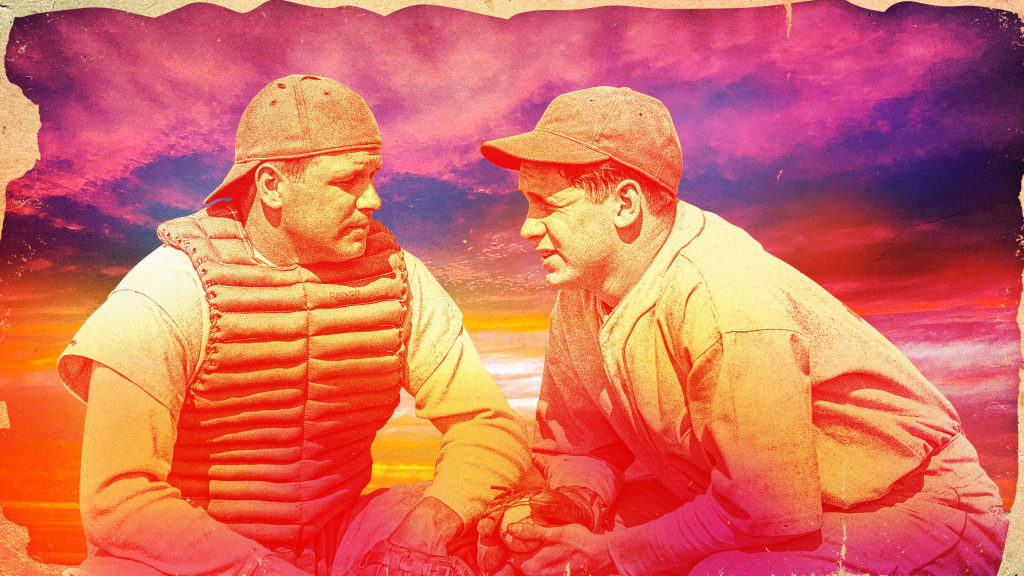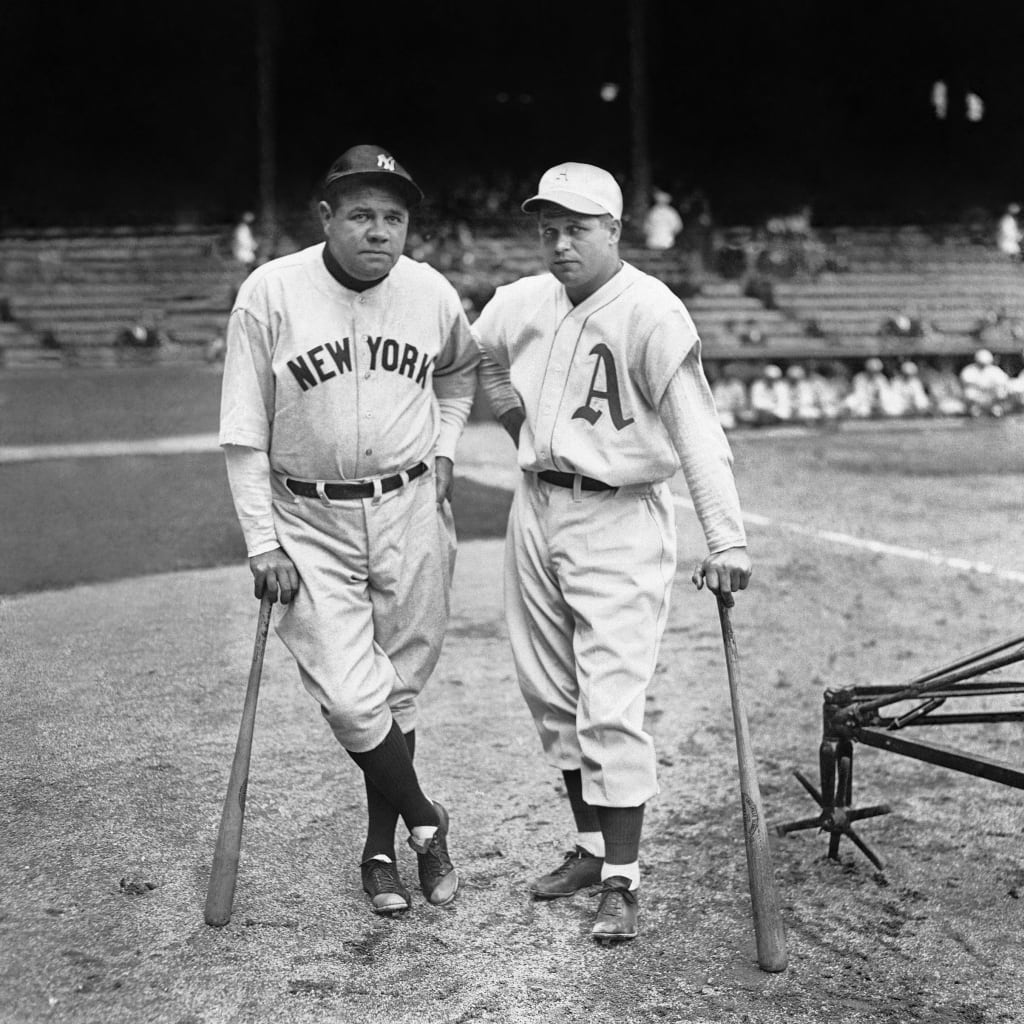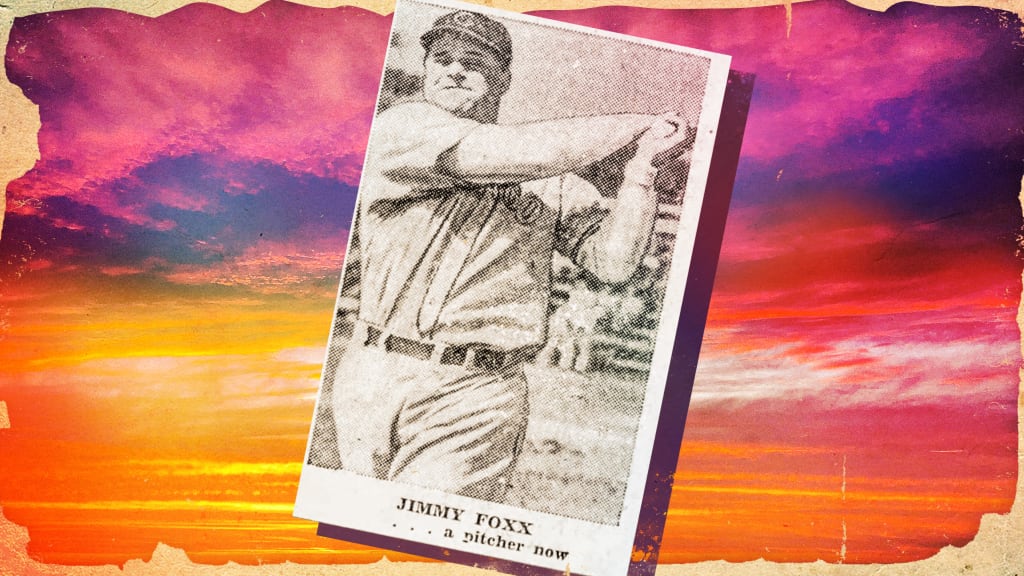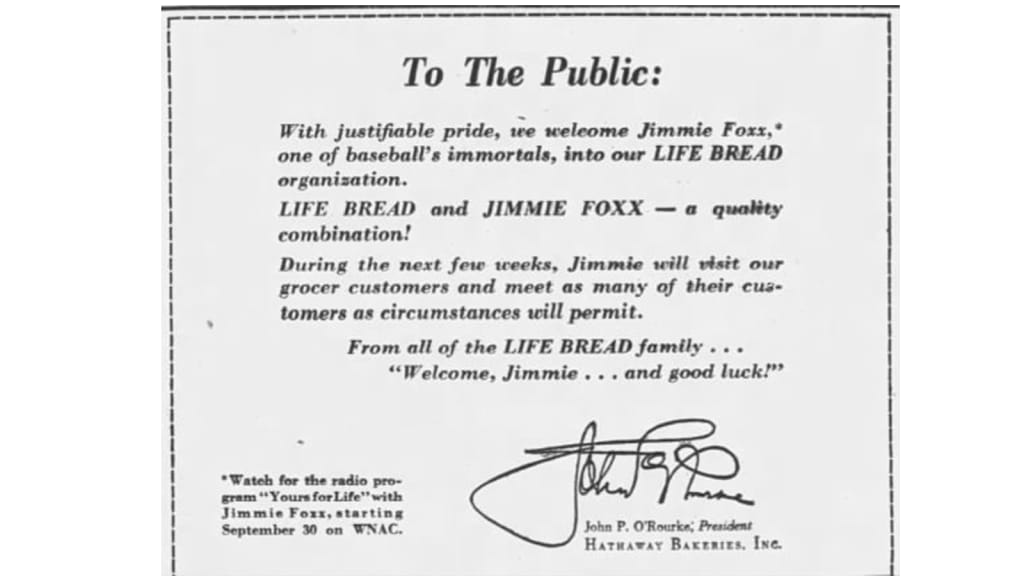
A version of this story originally ran in January 2022.
There was nothing left for Jimmie Foxx to prove. The hulking slugger, referred to affectionately as "The Beast" for his stout frame and ability to hammer baseballs a country mile, had already become a baseball legend and had a place waiting for him in the Hall of Fame -- even though the Hall was still just in its infancy.
He'd smashed more than 500 home runs, won two World Series titles with the Philadelphia A's, won three MVP Awards and gone to nine All-Star games, including the very first one in 1933. If Foxx was ready to be done with baseball, that would have been just fine -- especially since he had already retired for the 1943 season. He'd returned the following year, going just 1-for-20 with the Chicago Cubs before finishing out the string as the manager for the Class B Portsmouth Cubs in the season's final weeks.

But great players never want to hang 'em up. Michael Jordan couldn't stop himself from switching to baseball back to basketball before making one final go with the Washington Wizards. Jim Bouton took a big league mound eight years after his final appearance. Most recently, Andy Pettitte came back after retiring before the 2011 season. But none of them ever changed positions like Foxx was about to.
Foxx had already shown a willingness and ability to move all over the field. Originally a catcher, Foxx eventually made his name as a first baseman. But he had also played third, left field, right field and had even pitched an inning of relief for the Red Sox in 1939. But when he signed with the Phillies, that wasn't the plan: With the war effort underway and countless ballplayers drafted into the fight, Foxx was expected to contribute off the bench and at the infield corners. The team was hoping the leg and sinus issues that he'd suffered in recent years would be behind him and a healthy Foxx could contribute with his stick.
“I am very optimistic about Jimmie Foxx,” said Phillies general manager Herb Pennock. “He is in excellent shape." Pennock noted in a separate interview that Foxx could still "hit 'em a mile."
The Beast, not surprisingly, agreed.
"My legs are good, my eyes are fine, and the broken ribs which handicapped me so much a year ago have completely healed," Foxx said. "I feel sure that I will be able to help the Phils and Herb Pennock."
After making his debut as a pinch-hitter on Opening Day, Foxx was a regular starter at the infield corners until the end of June, when he was primarily relegated to bench duties. With the slugger hitting a punchless .270/.352/.404 with just four home runs in July, the writing was on the wall.
“When the war’s over, I’m through," Foxx told the New York Times. "If I were to quit today, I guess I'd have played enough."
But he didn't want to quit in the middle of the season and was willing to do whatever he could to help the hapless Phillies. That meant it was time to switch positions.
“It’s his only chance to stay active in the big leagues – and I’m going to see that he has a fair one,” manager Ben Chapman said. “If there is one thing the Phillies need more than anything else, it is pitchers, and then more pitchers.”
Pitching wasn't necessarily new to Foxx. He had struck out 18 batters in a game as a high schooler, had tossed some frames during the U.S. tour of Japan in 1934 and had even pitched a complete game while managing Portsmouth the year before. He had struck out eight and gave up only six hits that day.

In his first appearance on July 15, he held the Reds hitless and scoreless for 2 2/3 innings, though his control was iffy and he walked four batters. He took the mound again a week later against the Cubs. This time, he pitched two shutout frames, giving up just two hits, a walk and striking out two. For a Philadelphia club that finished last in the Majors in ERA that year, getting this kind of relief help from their veteran slugger was pretty darn good.
Foxx wouldn't retake the mound for nearly another month, and he wasn't even much of a pinch-hitter by then, going just 0-for-4 at the plate in that time. But on Aug. 19, Foxx was given the ball in an emergency start to face Cincinnati in the second game of a doubleheader.
As Mike Lackey pointed out for SABR, this wasn't exactly a Reds powerhouse club. "Aside from first baseman Frank McCormick and shortstop Eddie Miller, none of the Reds’ position players was more than a wartime stopgap," Lackey wrote. "None had played regularly in the major leagues before 1942 and none survived in the majors after 1946."
Still, you don't get to pick the competition, and that Reds team had enough talent to finish 15 games ahead of Philadelphia to avoid the National League cellar. So, after a shaky start -- Foxx walked four batters over the first two innings and hit another in the third -- he soon settled down and retired Cincinnati in order in the fourth, fifth and sixth. Tossing a "sort of curve, a sly change of pace and yes, a fastball when he felt he needed it," Foxx took a 4-1 lead into the seventh. But after retiring the first two batters on a strikeout and a pop out, Foxx gave up three consecutive singles and was pulled for Andy Karl to preserve the lead. In the end, Foxx finished with a pretty good line: He pitched 6 2/3 innings, gave up four hits and two runs, walked four and struck out five. Most importantly, he earned his very first Major League win.
Though some reports said he pitched "superbly" and noted that the team may have found a new pitcher, others had their doubts. “The Reds are currently making all types of pitchers look good," the Cincinnati Enquirer reported.

Foxx would make only six more appearances on the mound that year, including one final start when Philadelphia faced the Boston Braves as a kind of homecoming of sorts for the slugger. Despite the lack of stuff and perhaps because of the weak opposition, the 37-year-old Foxx acquitted himself quite nicely. Foxx finished the year with a 1-0 record and a 1.59 ERA in 22 2/3 innings. He gave up just 13 hits in that time and struck out 10. Sure, the Major Leagues' very best may have been overseas instead of at the ballpark, but with just a little squinting you could see how, with a slight twist of fate, Foxx may have become a big league hurler instead.
Still, Foxx was known more for his prodigious home runs and he had a few left in him. Facing the Pirates on Sept. 9, Foxx blasted the final two home runs of his career off Boom-Boom Beck and Johnny Lanning to finish with 534 in his career -- second only to Babe Ruth at the time. When he announced his retirement at the end of the year, newspapers even put him in discussion with Ruth and George Sisler as the greatest ballplayer of all time -- his work with the Phillies giving him the edge.
"This past season Foxx pitched and won at least one game for the Phillies," one reporter wrote in The Commercial Appeal, "and anybody who can win a game for the Phillies is bound to have a lot on the ball."
Though his playing days were done, his pitching days weren't: Foxx's next move was as pitchman for Life Bread before going on to manage the Fort Wayne Daisies of the All-American Girls Professional Baseball League in 1952.

